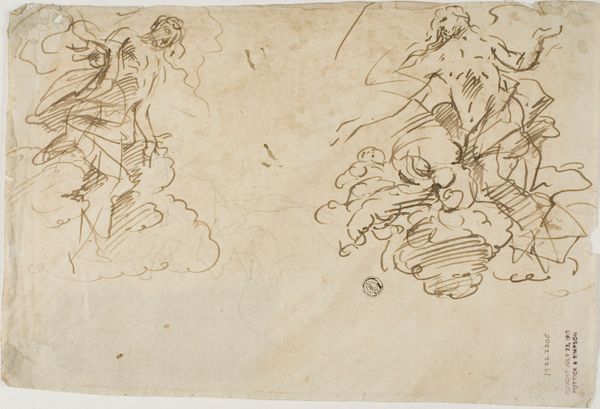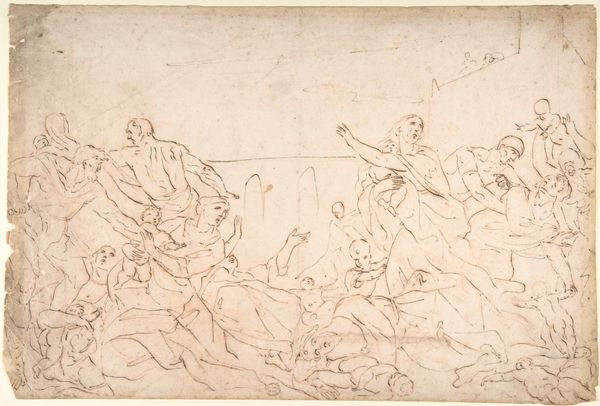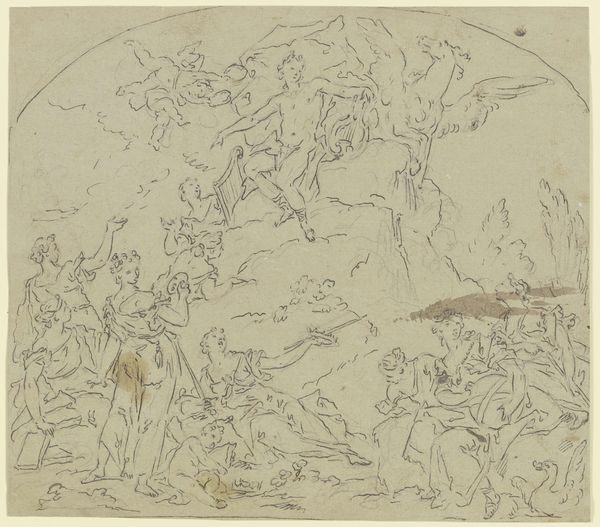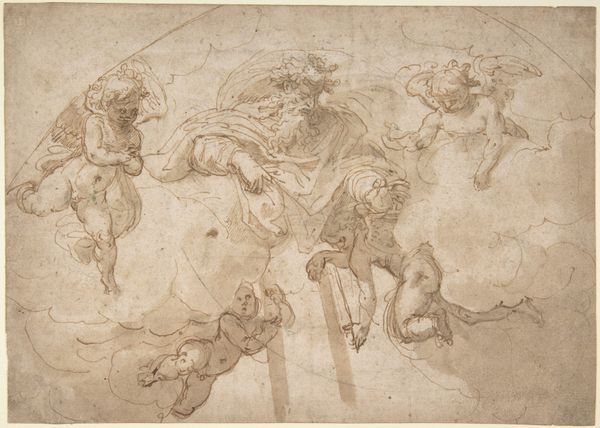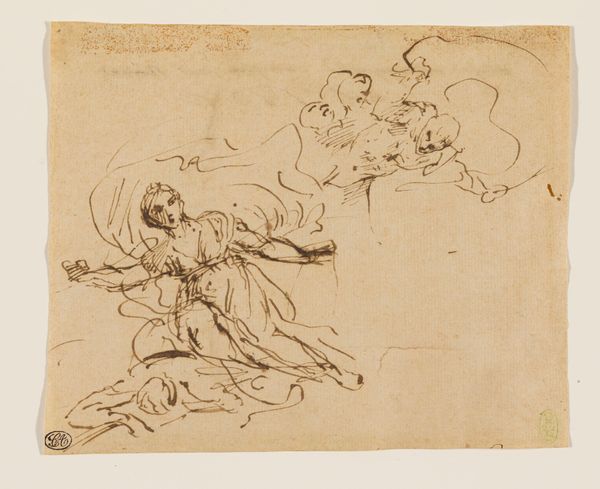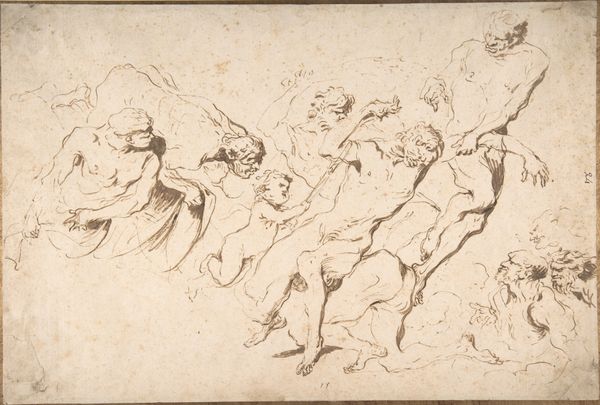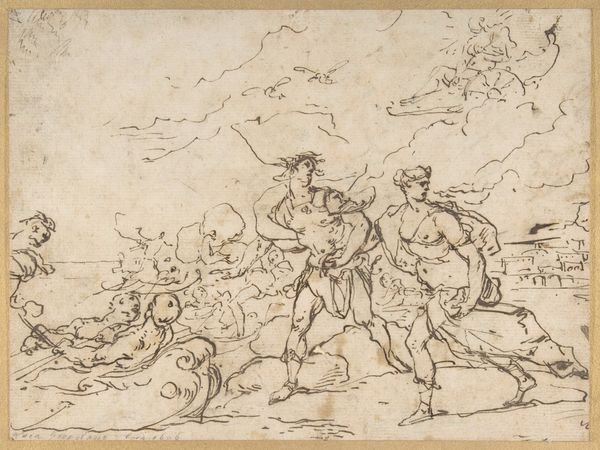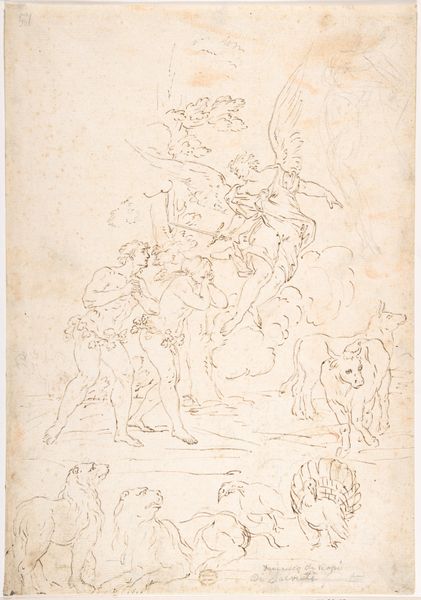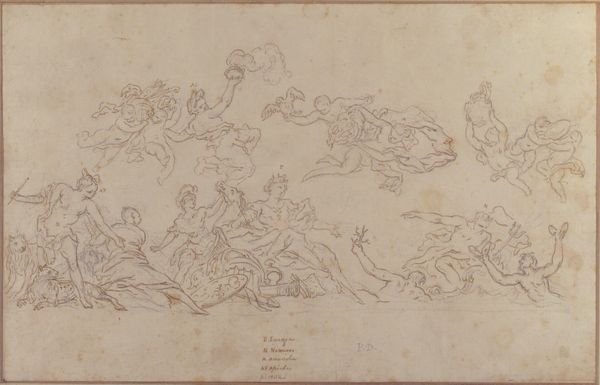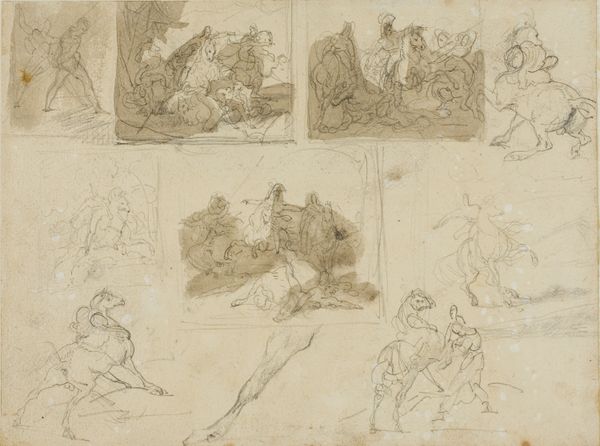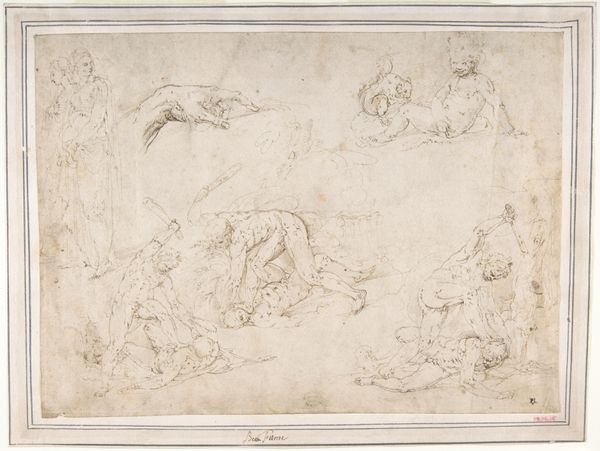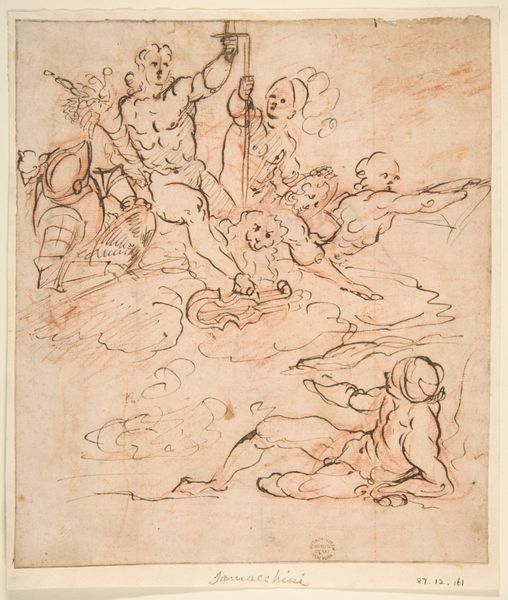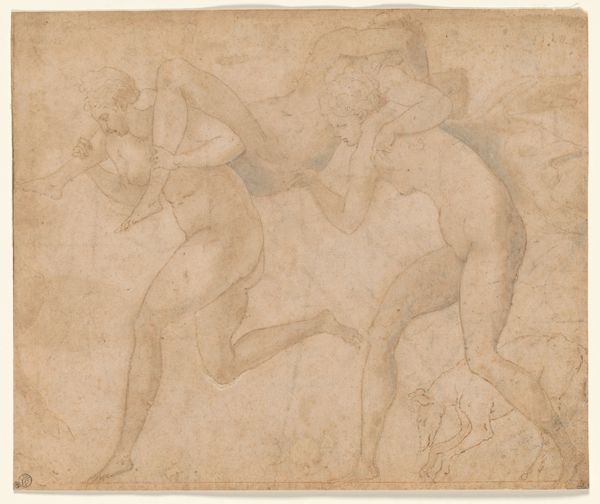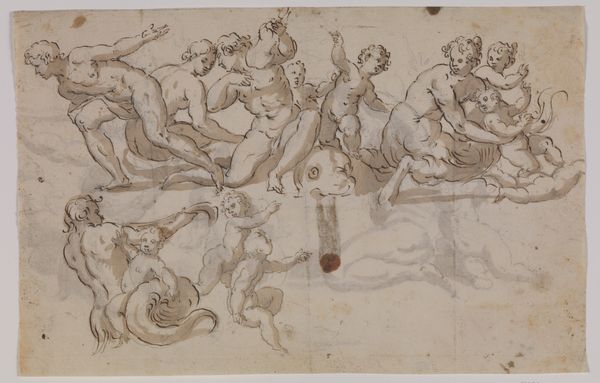
drawing, print, paper, graphite
#
drawing
# print
#
landscape
#
figuration
#
paper
#
romanticism
#
graphite
#
history-painting
Dimensions: 174 × 231 mm
Copyright: Public Domain
Editor: This is "Studies of Blacksmiths and Horses," a graphite drawing on paper by Théodore Géricault, dating from 1813-1814. The composition feels very dynamic, with the figures and animals in motion. How do you interpret this work? Curator: The sketch invites us to consider the socio-economic role of labor and the representation of masculinity in early 19th century France. Géricault made this around the time of the Napoleonic Wars. What stories might these blacksmiths, integral to military production and society's functioning, embody about power, class, and even resistance during this era? Editor: That’s interesting! I was only really focusing on the aesthetic aspects of the figures. How much did social commentary influence Géricault’s work generally? Curator: He was definitely drawn to representing individuals at the margins. Think about the Romantics, the unidealized bodies, and consider how these "studies" perhaps hint at a wider critique of societal structures and the human cost of industrialization. What feelings does it evoke in you knowing this was made after the French Revolution? Editor: That adds another layer of complexity. It becomes a study of men who forge things that give the state more power to continue conflicts… it makes me consider their complicity as a consequence of their labor. Thank you. Curator: Absolutely. Art gives us tools for reflection on cultural conditions and identity, labor and politics, agency, and social progress. It challenges us to acknowledge history’s messy entanglements.
Comments
No comments
Be the first to comment and join the conversation on the ultimate creative platform.
